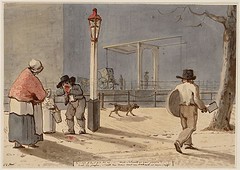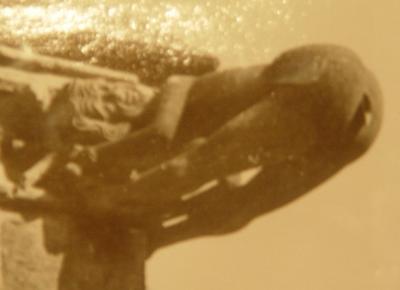Adolf Hitler @120

John Heartfield Hitler Swallows Gold and Spouts Junk, 1932. [1]
Adolf Hitler (1889 – 1945) remains a powerful and dark figure even 64 years after his death. His legacy as a personification of evil in the 20th century is rivalled only by Joseph Stalin‘s. Both were possessed by the Devil, Gabriele Amorth, the Vatican’s chief exorcist, asserted in 2006.
Which brings me to the problem of evil.
Epicurus is generally credited with first expounding the problem of evil, and it is sometimes called “the Epicurean paradox” or “the riddle of Epicurus.”
“Either God wants to abolish evil, and cannot; or he can, but does not want to. If he wants to, but cannot, he is impotent. If he can, but does not want to, he is wicked. If God can abolish evil, and God really wants to do it, why is there evil in the world?” — Epicurus, as quoted in 2000 Years of Disbelief
But shocking as it may sound, both Adolf Hitler and Joseph Stalin believed that they were actually bettering the world by their actions; the evil of Hitler and Stalin had — in their own eyes — a purpose.
Some feel that true evil lacks this purpose and only enjoys causing destruction and chaos as a form of ultraviolence without motive. As such, figures like serial killers, spree killers and psychopaths are the personificaton of evil.
It is their kind of gratuitous violence we fear most, because it is unmotivated, a caprice.
- “Stranger-killing, the killing which has no motive, is something which we associate to “pure evil“, and that we fear more than anything else in the world. There are several excellent examples of this morbid fascination, especially in the world of cinema: some of the most “relevant” contemporary blockbusters deal with the theme of serial killing (Ridley Scott’s “Hannibal” and “The Silence of the Lambs“, David Fincher’s “Seven“, Alfred Hitchcock’s “Psycho“, Mary Harron’s “American Psycho“).” — Albert Hofer[2] via [3]
While we like to think –not without reason, the first spree killer is a postwar development — that this kind of senseless violence is a late 20th century phenomenon, proof exists that gratuitous acts of violence already existed as far back as the early 19th century. Witness this illustration by Dutch illustrator Christiaan Andriessen:

A boy attacked in the street by a butcher’s apprentice with a cleaver, 22nd of November 1806. “What’s the matter lad? Well, that boy over there just cut me in my face with his cleaver.” — from the diary of Christiaan Andriessen:







